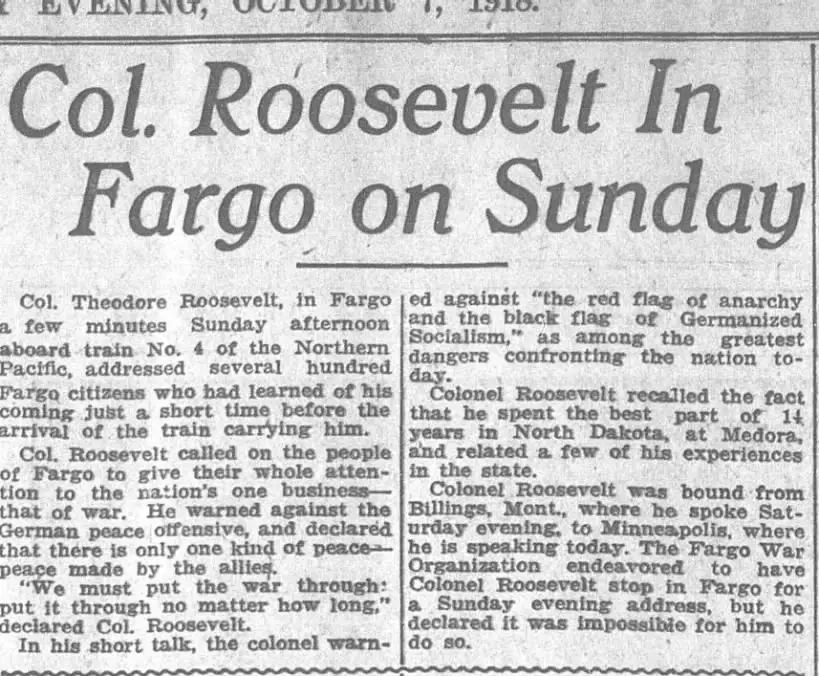Timeline of TR in the Badlands
THEODORE ROOSEVELT MAKES HIS FIRST VISIT TO THE BADLANDS AND BUYS THE MALTESE CROSS RANCH
At 24 years old, Theodore Roosevelt made his first visit to the Badlands of North Dakota. Roosevelt originally made this trip to hunt bison, unaware of how it would change his life. He fell in love with the frontier lifestyle of the Badlands and invested in the Maltese Cross Ranch (also known as Chimney Butte), seven miles south of the Northern Pacific Railroad. This visit laid the groundwork for Roosevelt’s passion for conservation of animals and habitat.
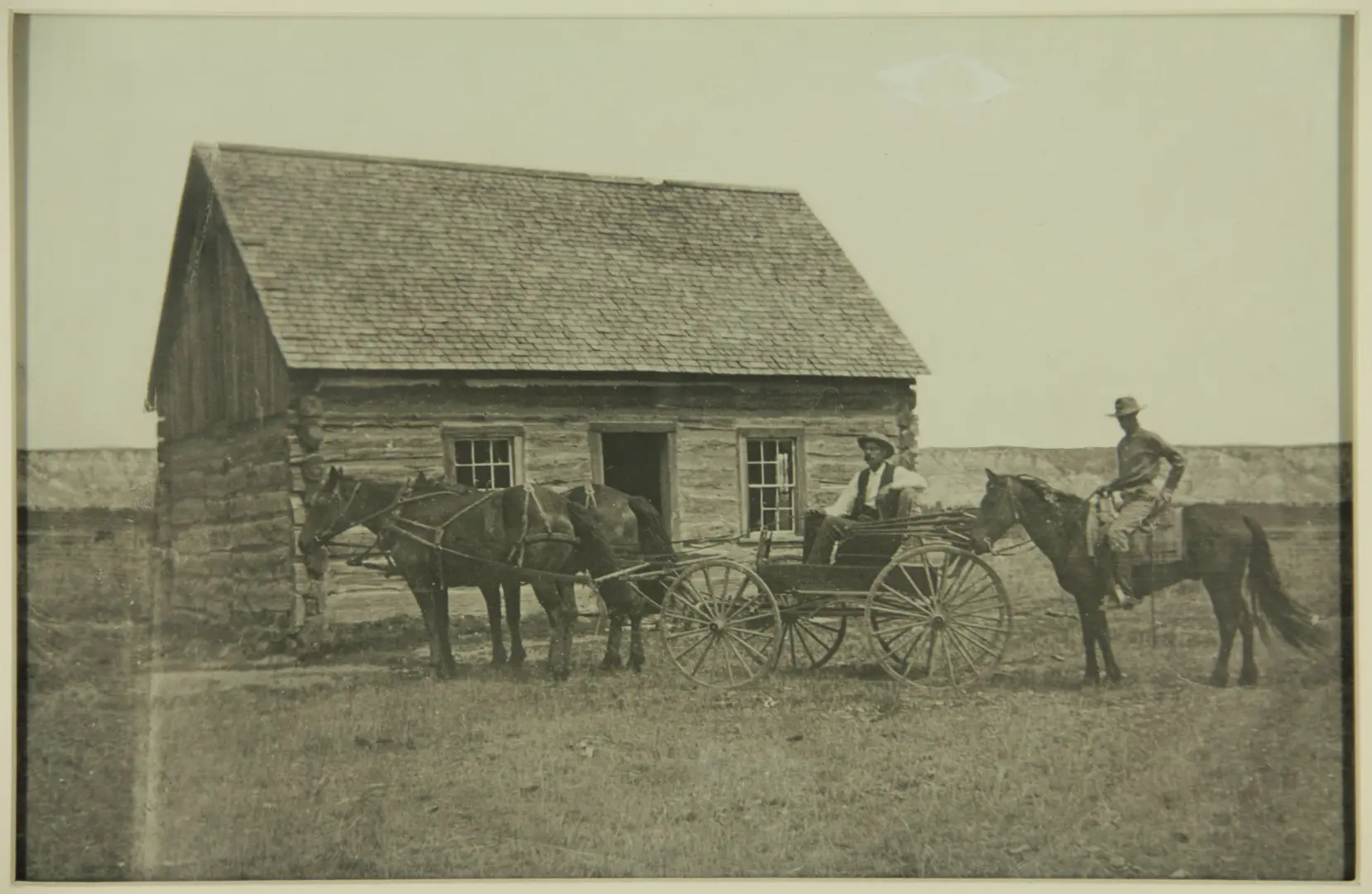
THEODORE ROOSEVELT RETURNS TO THE BADLANDS AND ESTABLISHES THE ELKHORN RANCH
Mourning the loss of his wife and mother, 25-year-old Theodore Roosevelt returned to the Badlands where he established the Elkhorn Ranch. He embraced the strenuous lifestyle and became a big game hunter, a rancher, and an authentic cowboy. Roosevelt credited North Dakota with being the place where “the romance of [his] life began.”
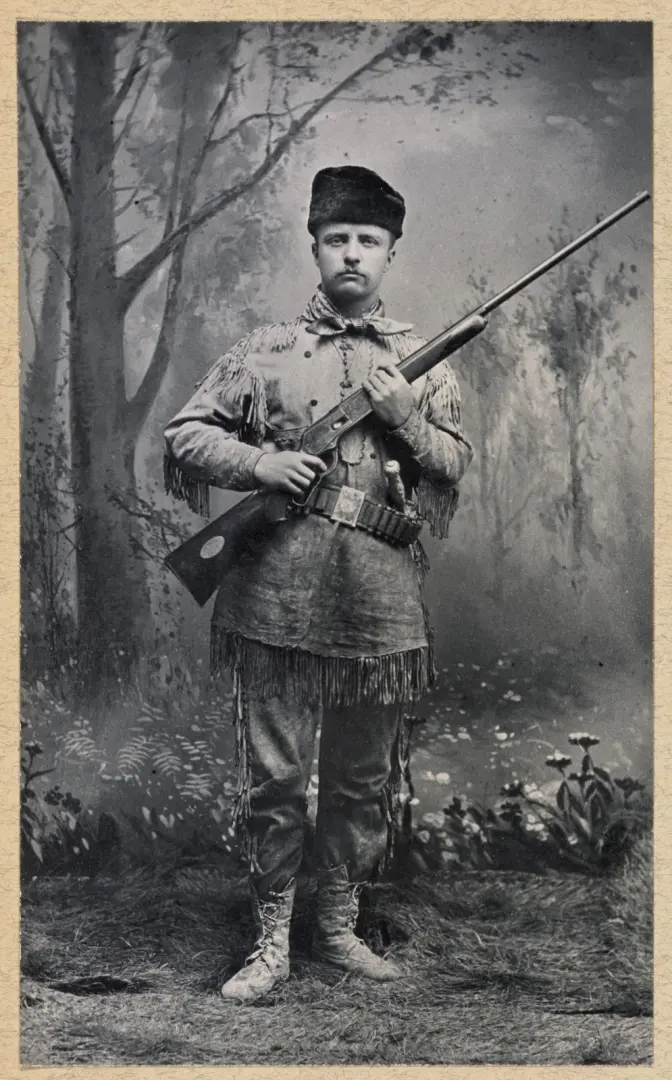
THEODORE ROOSEVELT ORGANIZES THE LITTLE MISSOURI STOCKMAN’S ASSOCIATION
Seeing the need for a central group who could enforce range rules in Medora, North Dakota, a group of stockmen began to form the Little Missouri Stockmen’s Association. The group stalled their first meeting until Theodore Roosevelt gave his support. Roosevelt was elected chairman of the Little Missouri Stockmen’s Association.
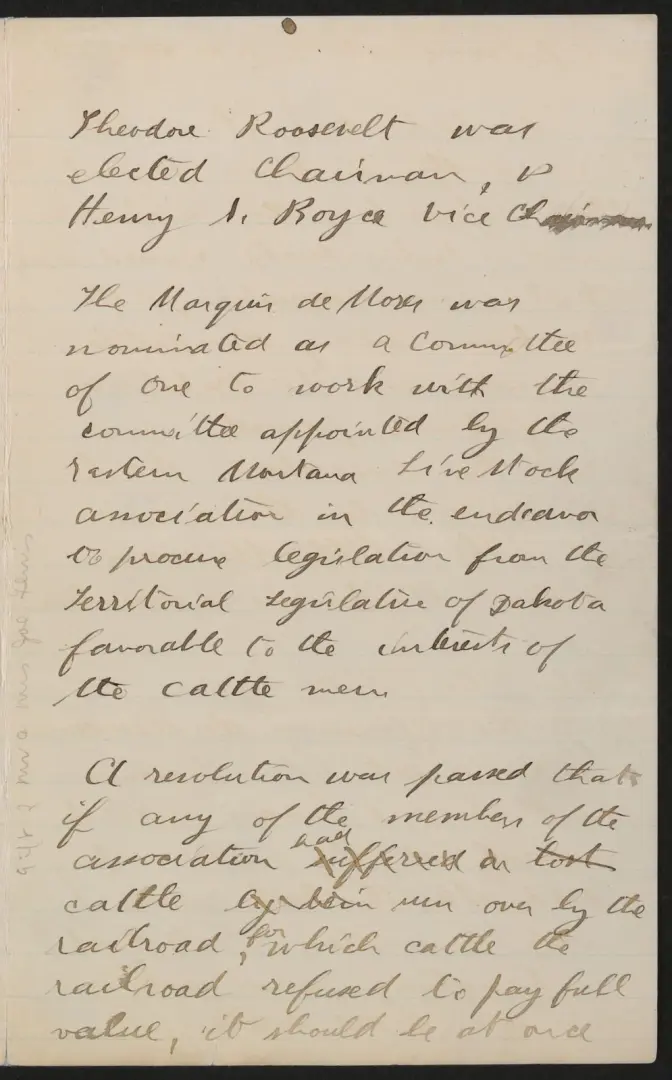
THEODORE ROOSEVELT NEARLY DUELS WITH THE MARQUIS DE MORÈS
The Marquis de Morès, French nobleman and founder of Medora, North Dakota, occasionally clashed with Theodore Roosevelt during their shared time in the Badlands. The two nearly resorted to a duel in 1885. While in jail during his trial for suspected murder, the Marquis, who was later acquitted, wrote to Roosevelt, asking if the latter was responsible for putting him in jail. The end of his letter implied the threat of a duel. Roosevelt, who had not acted against the Marquis, sent a careful reply that diffused the tension between the two.
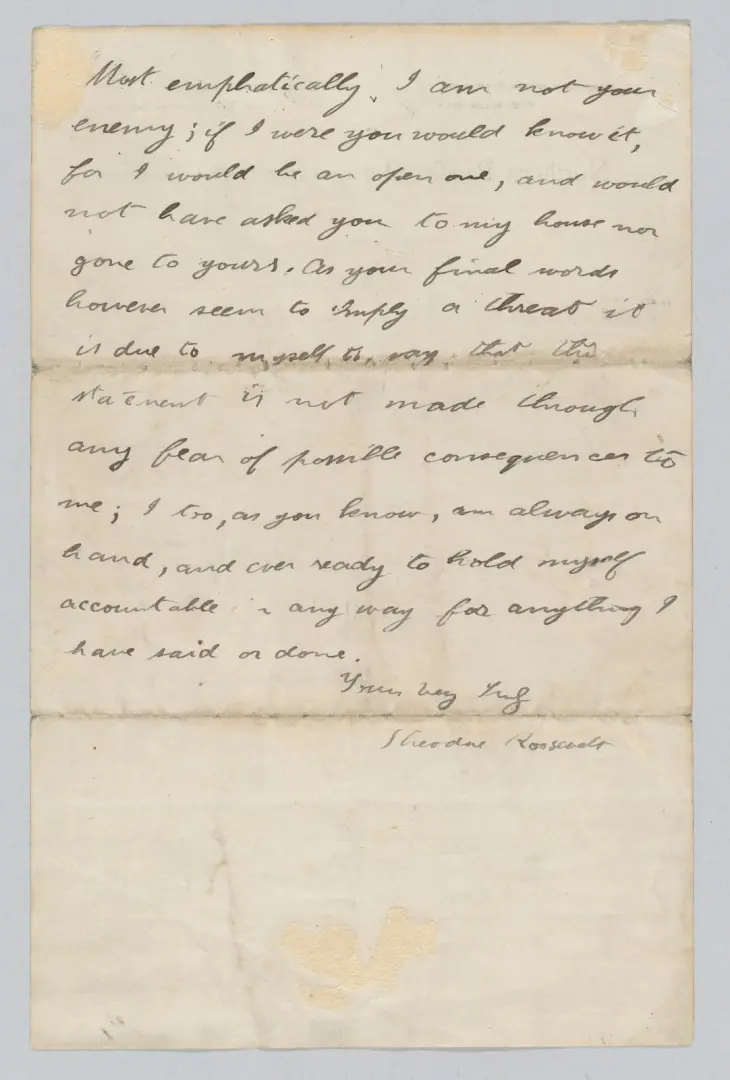
THEODORE ROOSEVELT PURSUES THE THIEVES WHO STOLE HIS BOAT
Theodore Roosevelt embarked on an adventure when three thieves stole a boat from his Elkhorn Ranch. Along with William Wingate Sewall and Wilmot Dow, Roosevelt set off in a new boat to follow the thieves. They captured the thieves without violence, and Roosevelt accompanied them to Dickinson, Dakota Territory, for trial.
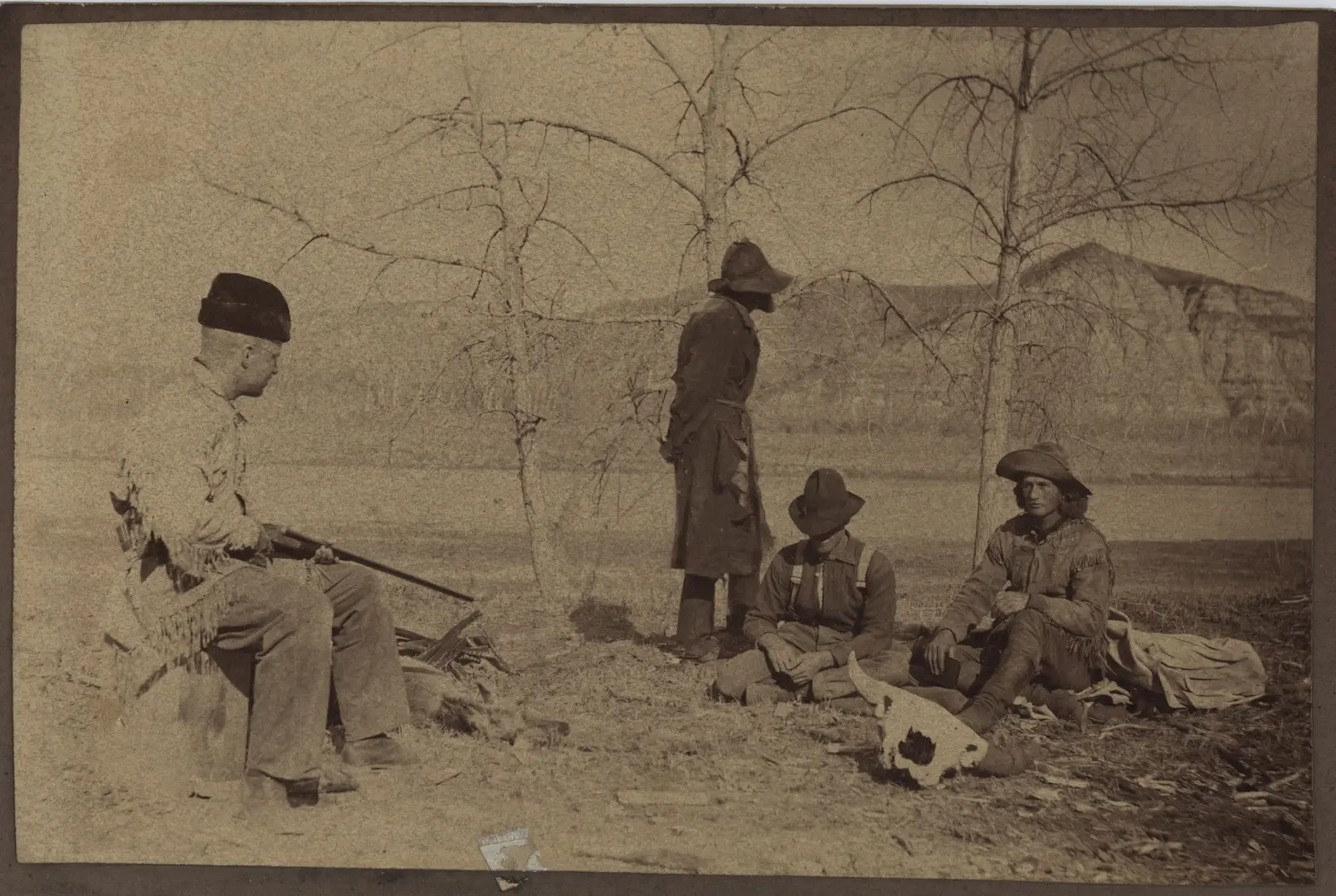
THEODORE ROOSEVELT DELIVERS HIS FIRST MAJOR PUBLIC SPEECH IN DICKINSON, ND, OFTEN KNOWN AS THE “BIG THINGS” SPEECH
At the Independence Day celebration in Dickinson, ND, 27-year-old Theodore Roosevelt delivered his first major public speech. Addressing the enthusiastic crowd, Roosevelt identified himself with his audience as a fellow American and laid out his vision for the future of the Dakota Territory. This address was often known as the “Big Things” speech for this passage: “. . . Like all Americans, I like big things; big parades, big forests and mountains, big wheat fields, railroads – and herds of cattle too; big factories, steamboats and everything else. But we must keep steadily in mind that no people were ever yet benefited by riches if their property corrupted their virtue.”
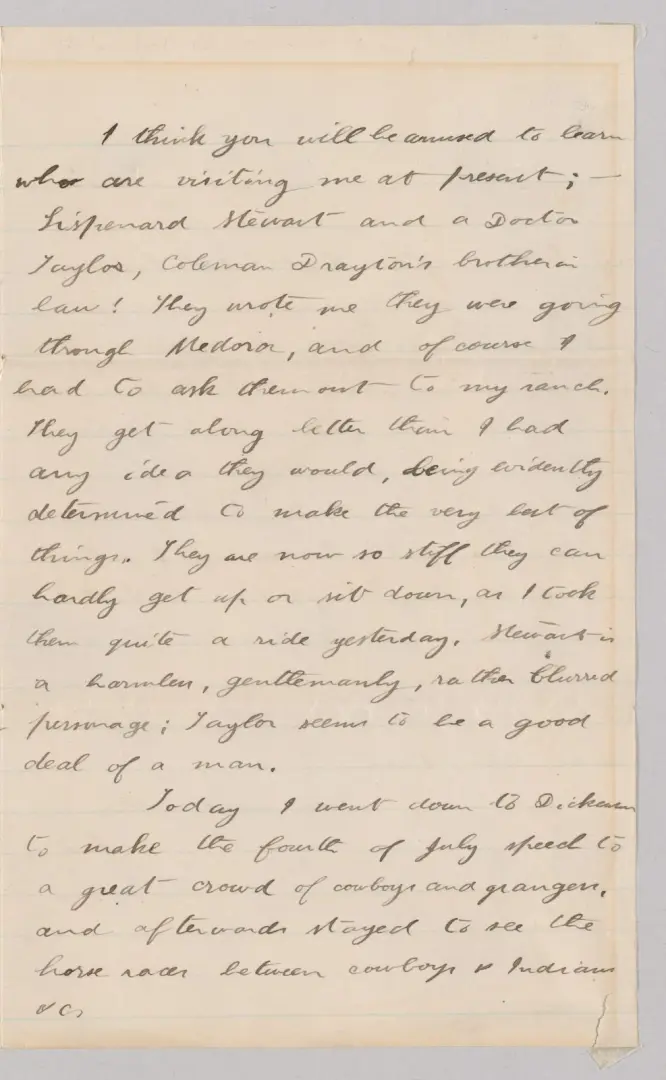
THEODORE ROOSEVELT RETURNS TO MEDORA TO SURVEY THE CATTLE LOSSES AFTER THE WINTER
The harsh winter of 1886-87 was disastrous for the ranching industry in the Badlands. Across the Great Plains, ranchers lost approximately 60-70 percent of their herds. Upon returning to Medora, Theodore Roosevelt was crushed by the loss of so many cattle. He did not leave the cattle business immediately but did scale back significantly. A few years later, Roosevelt said in a letter to his ranch hand, Bill Sewall, “I am picking up a little in the cattle business, branding a slightly larger number of calves each year, and putting back a few thousand dollars into my capital; but I shall never make good my losses.”
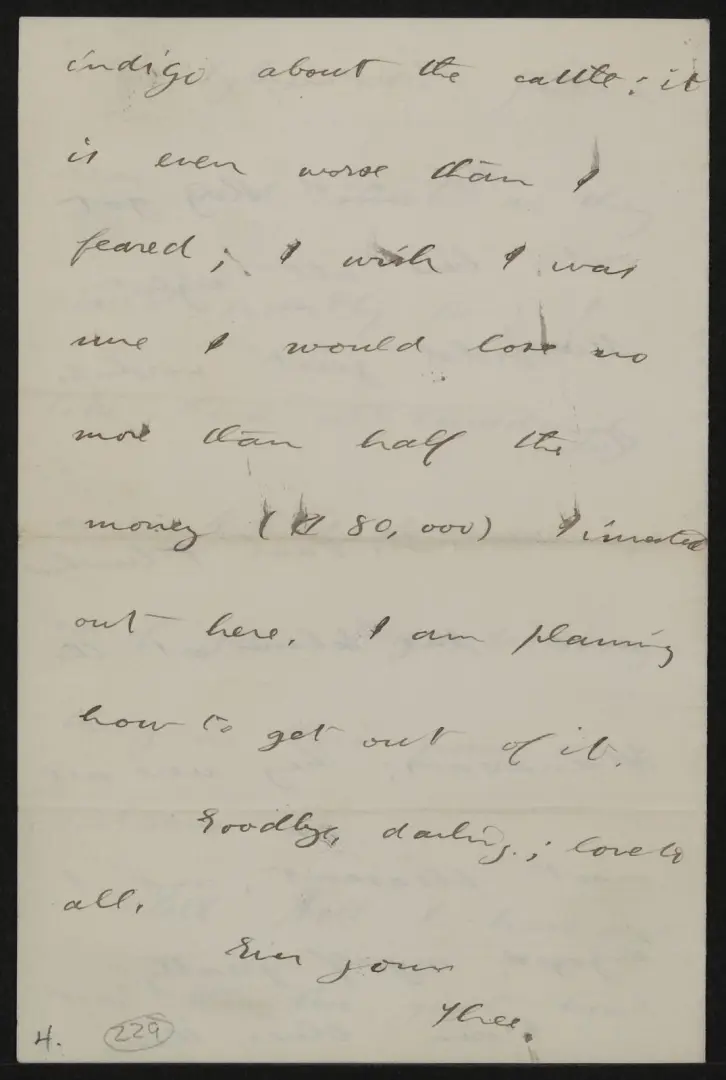
THEODORE ROOSEVELT COMES TO THE BADLANDS FOR A HUNTING TRIP
In 1888, Theodore Roosevelt came to the Badlands for a hunting trip. He returned to New York in October for the lead-up to the presidential election, supporting Republican candidate Benjamin Harrison.
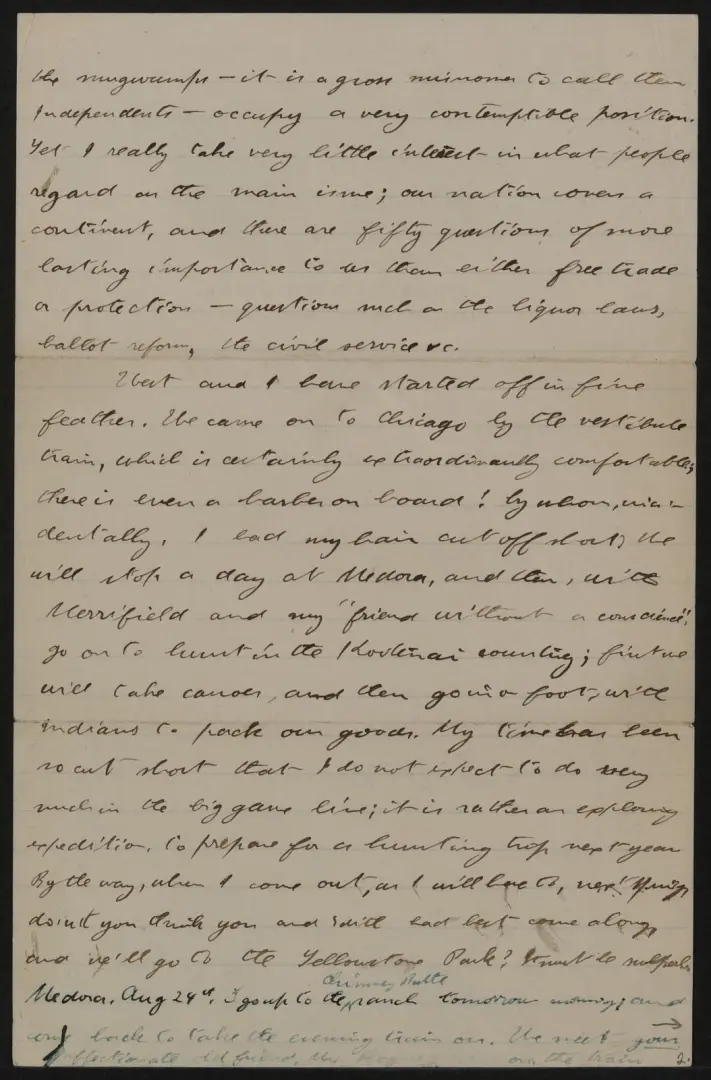
THEODORE ROOSEVELT COMES TO THE BADLANDS FOR A HUNTING TRIP
In the year 1889, Theodore Roosevelt took another hunting trip. He missed his wife Edith and planned to bring her the next time he visited the Badlands.
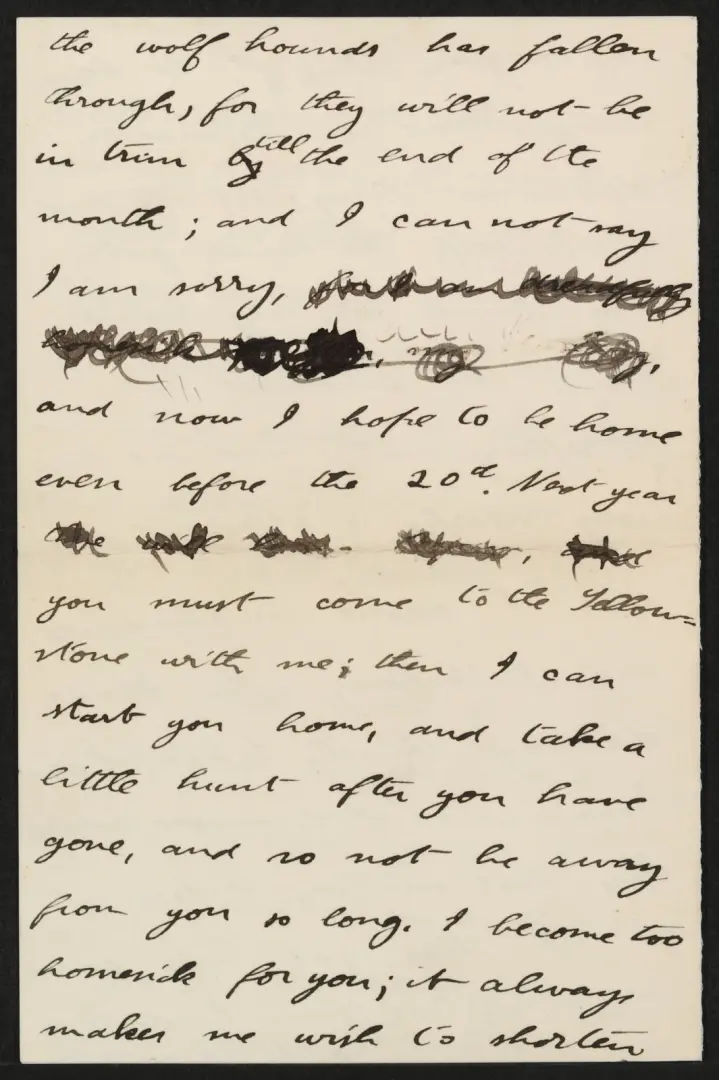
THEODORE ROOSEVELT VISITS ELKHORN RANCH WITH HIS FAMILY
Theodore Roosevelt brought his wife, Edith Kermit Carow Roosevelt, and his two sisters, Anna Roosevelt and Corinne Roosevelt Robinson, to Elkhorn Ranch in the Badlands. Edith loved the ranch and horseback riding. Roosevelt also took her through Yellowstone National Park. He decided that 1890 was the last year he would keep the ranch house open.
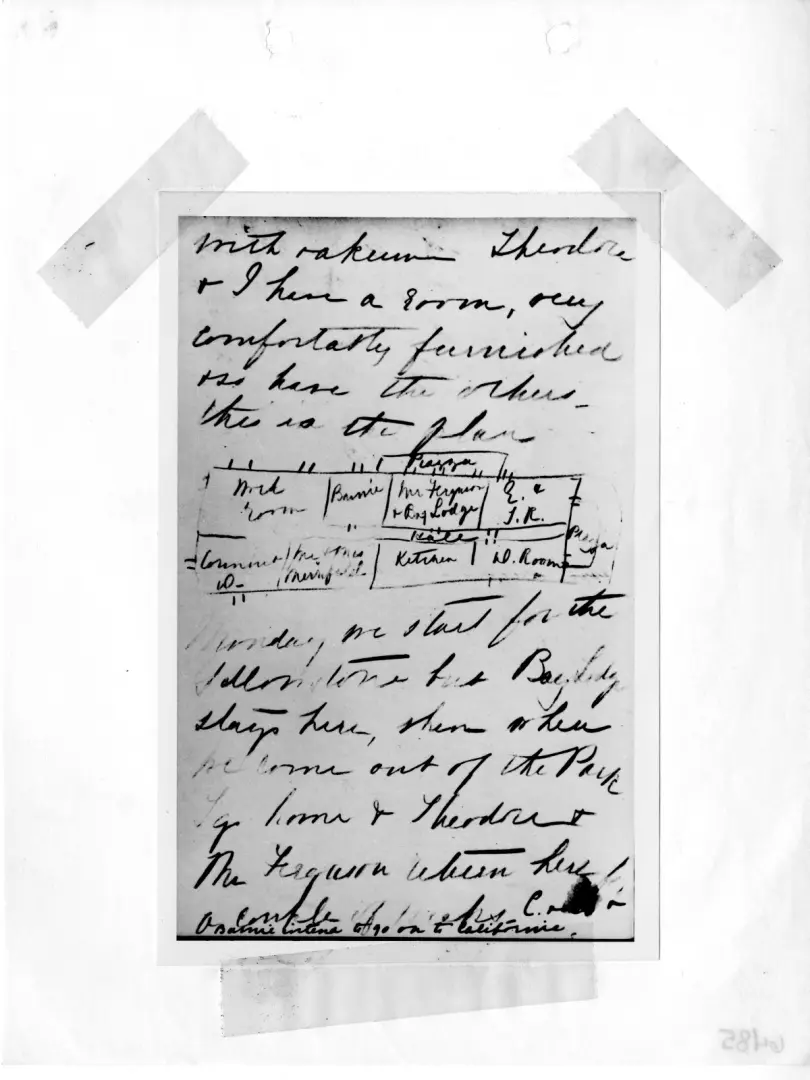
THEODORE ROOSEVELT COMES TO THE BADLANDS FOR A HUNTING TRIP
Theodore Roosevelt traveled to the Badlands and the Rockies at the end of August 1891, shortly after his daughter Ethel was born. On September 1, 1891, Roosevelt wrote to his sister Anna, whom he called “Bamie,” about his trip. “I have just come in from a three hours ride on Muley,” he wrote. “I do love this country!”
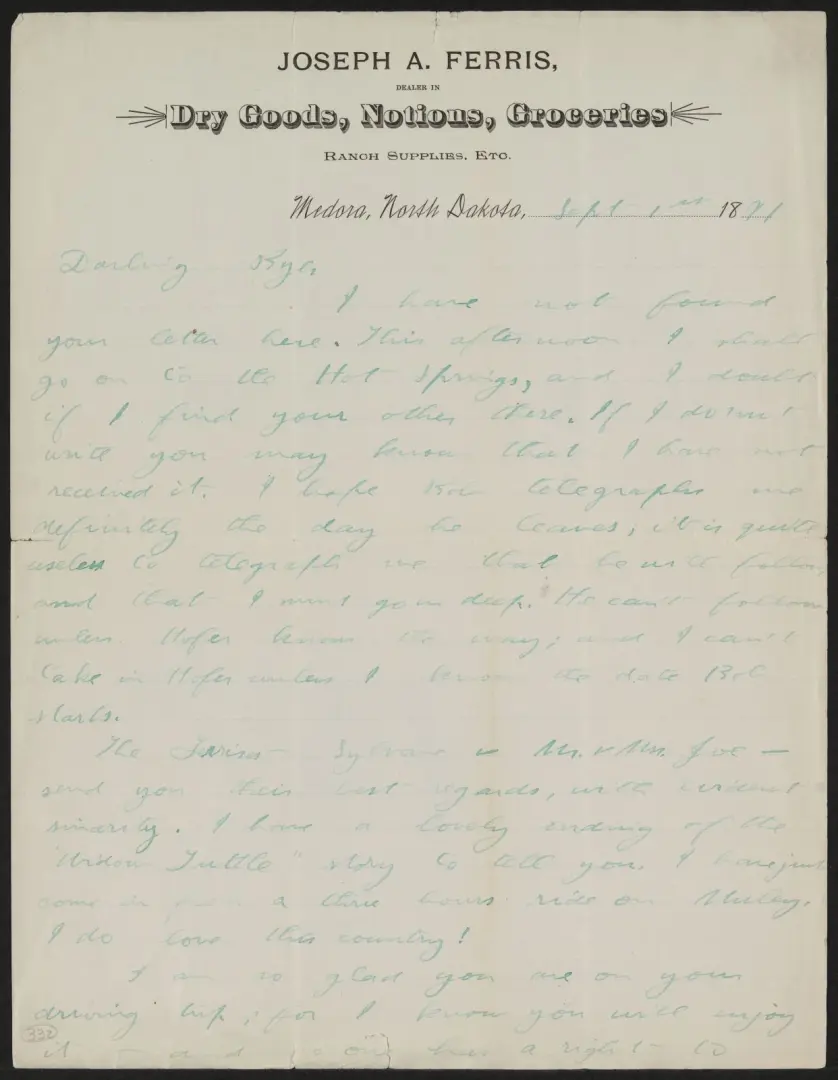
THEODORE ROOSEVELT COMES TO THE BADLANDS FOR A HUNTING TRIP
Theodore Roosevelt took a difficult hunting trip with Hector Munro Ferguson. Roosevelt noted that the cattle were looking well but prices were low and said that Elkhorn Ranch looked melancholy being so deserted.
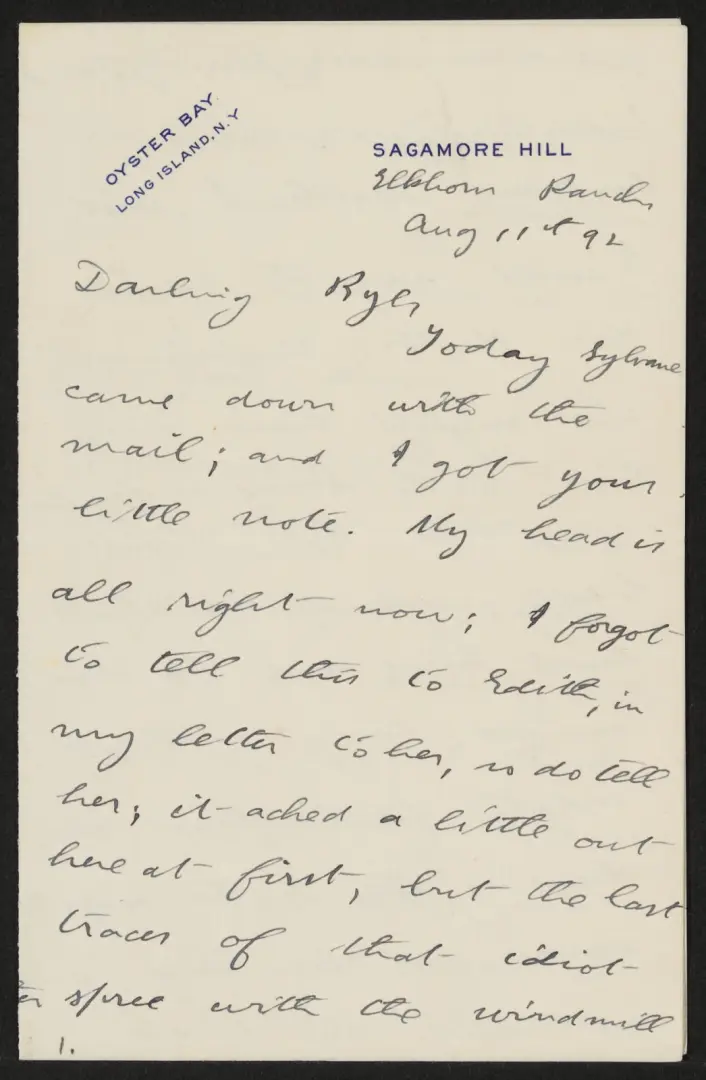
THEODORE ROOSEVELT COMES TO THE BADLANDS FOR A HUNTING TRIP
In September 1893, Theodore Roosevelt went hunting in the Badlands with Alexander Lambert and Sylvane M. Ferris. He saw an abundance of antelope but only shot two. Roosevelt also checked in on his ranch. In a letter to his sister, Anna, he said, “Of course, as always, I have enjoyed myself; but I can not help feeling a shade melancholy at the sight of the ranch house fast [deteriorating?] into decay; while the drought is so severe, and the grass so poor, that I look forward with much apprehension to the effect of a severe winter on the cattle.”
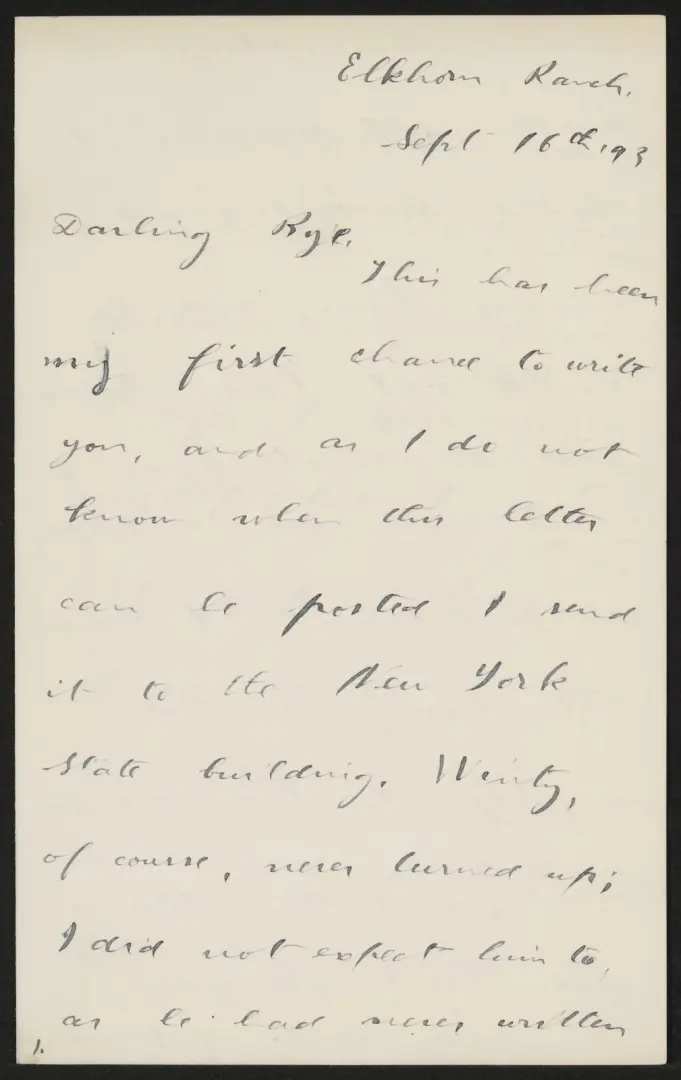
THEODORE ROOSEVELT COMES TO THE BADLANDS FOR A HUNTING TRIP
Theodore Roosevelt was further discouraged by the state of Elkhorn Ranch when he returned for a hunting trip in October 1894. Roosevelt had to sleep on the porch of the ranch house as it had been deserted for a long time. His cattle were in poor condition as well due to severe drought. Writing to Robert Harry Munro Ferguson, Roosevelt said, “This made me so blue that it took off a good deal of the enjoyment of my trip; nevertheless, I could not help enjoying it.” He spent ten days hunting antelope on the Beaver, Bull Run, and Bullion creeks. After killing a while-tailed buck, Roosevelt “got out the broken-back rocking-chair [. . .] on the piazza and rocked to and fro, looking across the river at the buttes as [he had] done so often for the past ten years . . .”
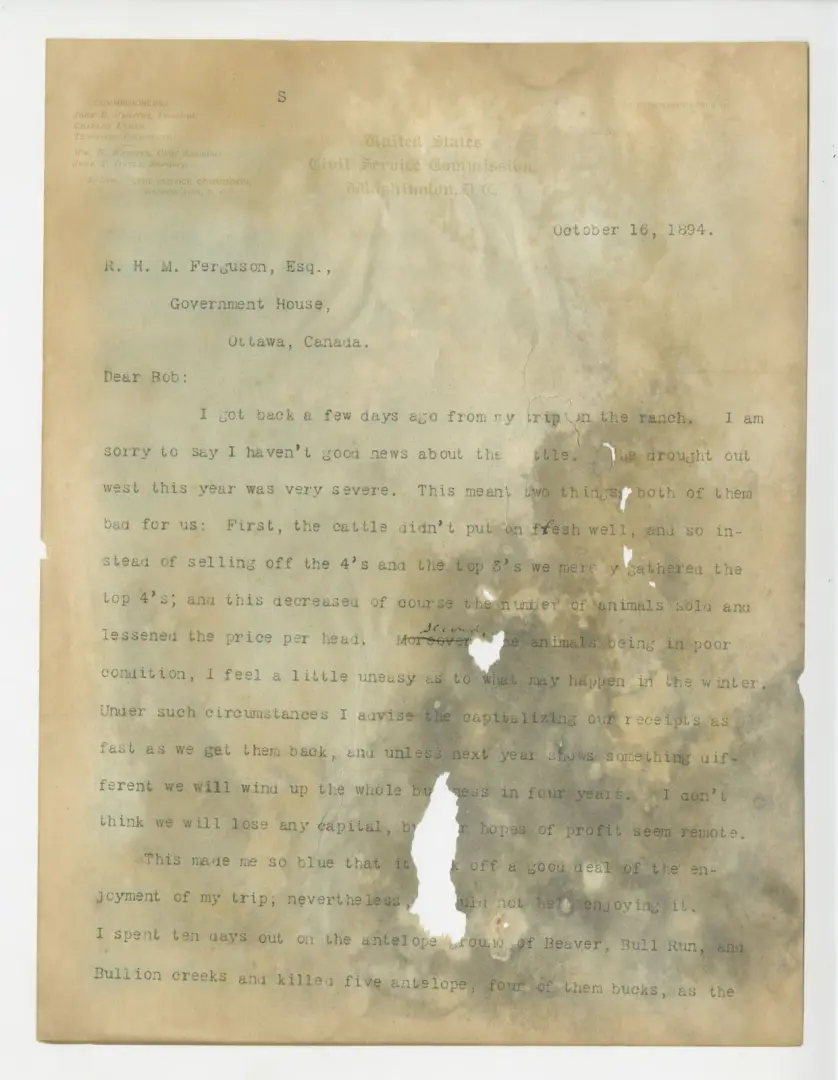
THEODORE ROOSEVELT COMES TO THE BADLANDS FOR A HUNTING TRIP
During the fall of 1896, Theodore Roosevelt spent twelve days at Elkhorn Ranch, “sleeping in the open, and riding over the immense grassy plains.” He killed five antelope with a new small caliber smokeless powder Winchester and a half-jacketed bullet.
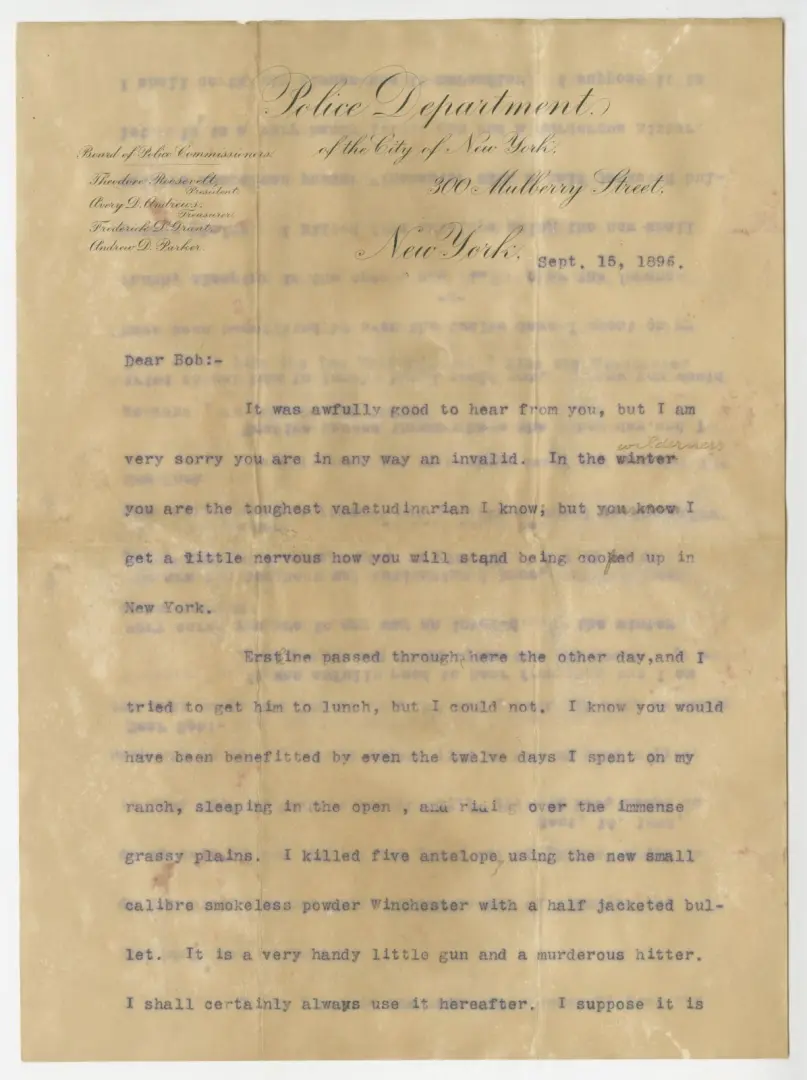
THEODORE ROOSEVELT SELLS HIS REMAINING CATTLE INTERESTS
Theodore Roosevelt finally sold the last of his remaining cattle interests in 1898 to S. M. Ferris of Medora. However, according to the Bismarck Tribune issue on August 28, 1898, “Roosevelt has an abiding affection for the cattle ranges and would have recruited a company from among the cowboys had not the demands for place been so numerous and insistent in the east and south.”
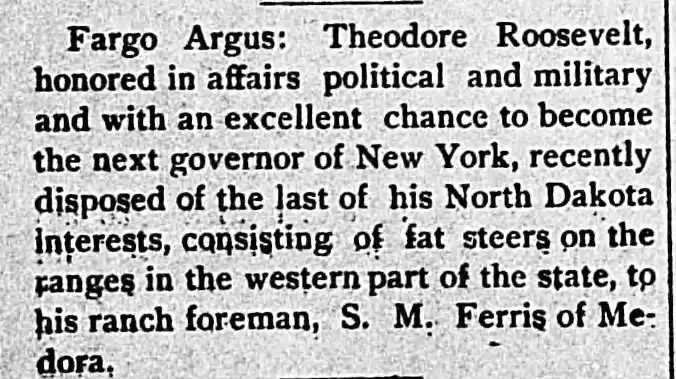
THEODORE ROOSEVELT MAKES A WHISTLE STOP IN MEDORA AND MENTIONS IT WAS WHERE “THE ROMANCE OF [HIS] LIFE BEGAN”
While campaigning as vice president on the ticket with William McKinley, Theodore Roosevelt made a stop in Medora in September 1900. He spent time talking with Joe Ferris, a storekeeper in Medora near Roosevelt’s ranch. The train left without Roosevelt, but he was unconcerned as he thought the conductor would back the train up when he realized Roosevelt was missing. During this stop, while seated on a range horse, he told newspaper correspondents, “I may say that here, boys, in this country of hills and plateaus the romance of my life began.”
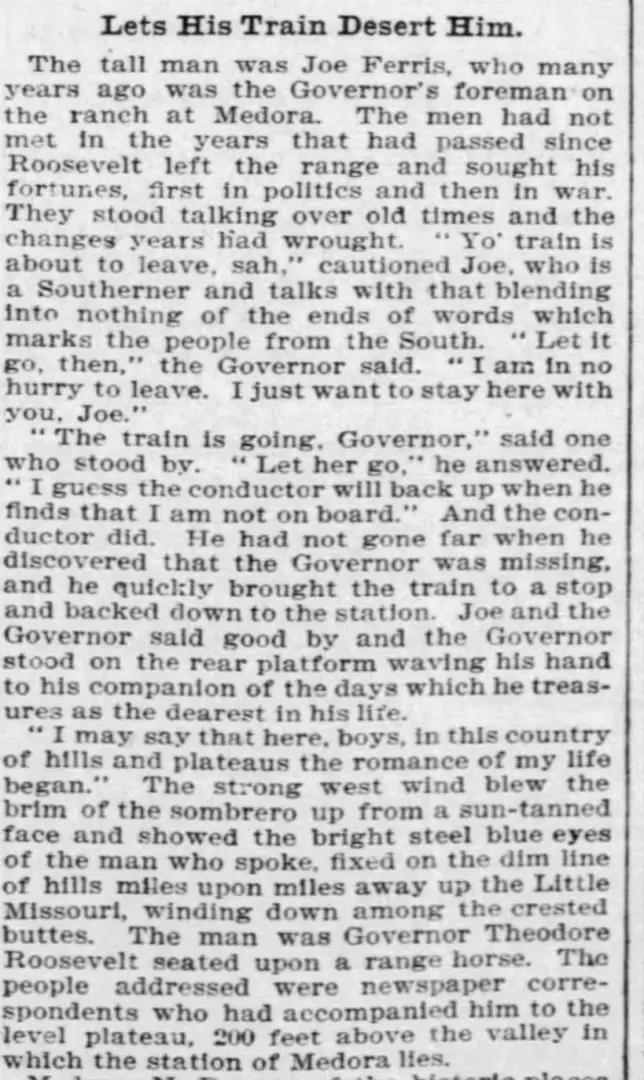
THEODORE ROOSEVELT MAKES A WHISTLE STOP IN MEDORA
During his presidency in April 1903, Roosevelt took a trip out west. He stopped in Medora for 35 minutes and gave a speech about his first time visiting Medora, 20 years before.
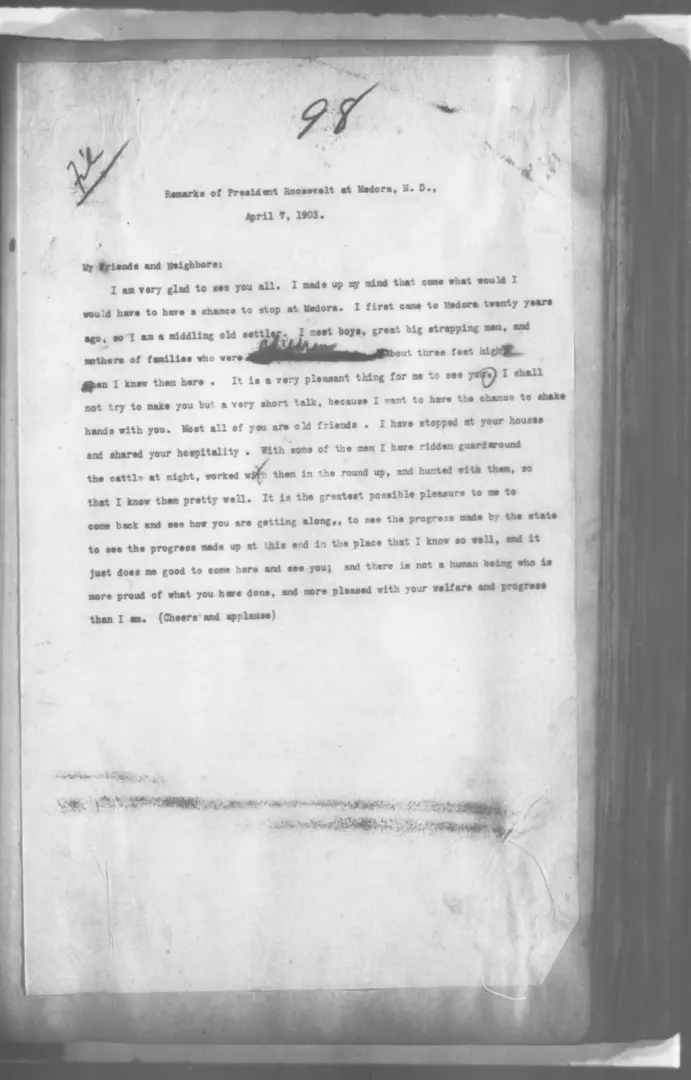
Theodore Roosevelt declares he would not have been president had it not been for his time in North Dakota
In a speech delivered in Fargo, North Dakota, on September 5, 1910, Theodore Roosevelt said, “I never would have been president if it had not been for my experience in North Dakota.”
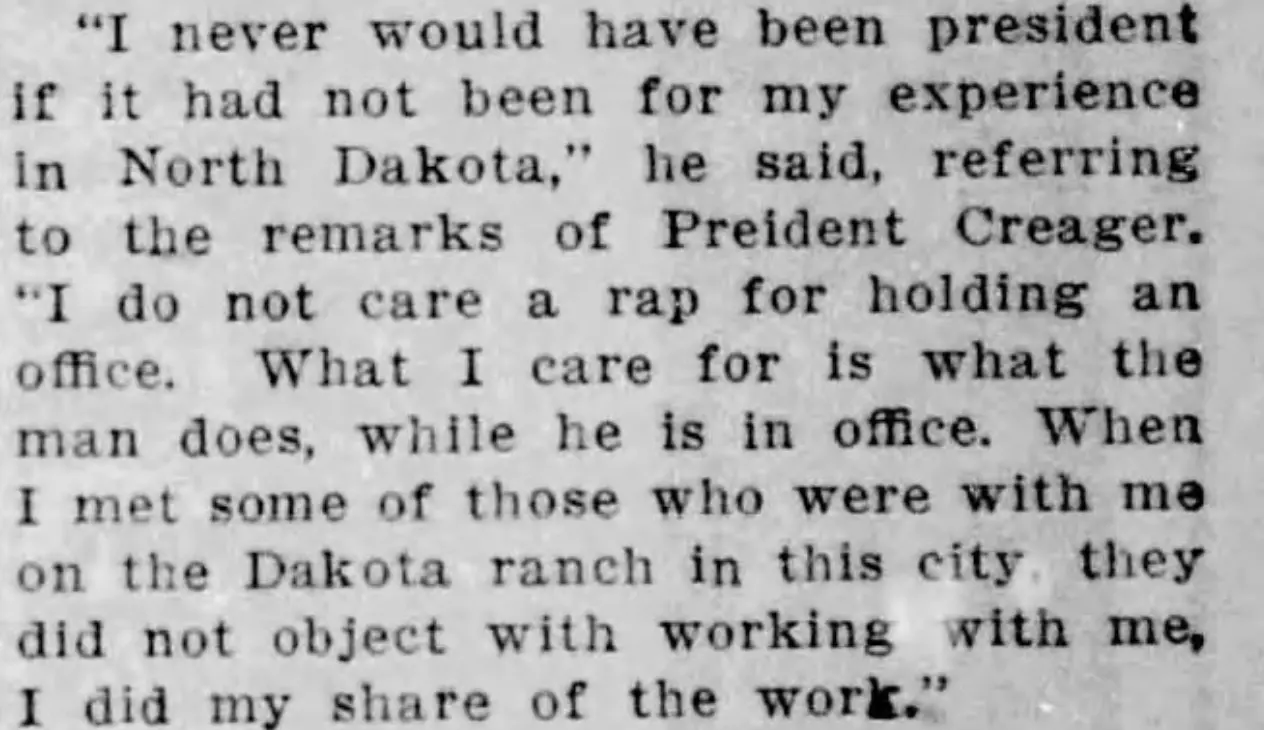
THEODORE ROOSEVELT MAKES A WHISTLE STOP IN MEDORA
Theodore Roosevelt made a whistle stop on April 13, 1911. Although he only stopped for five minutes, 200 people showed up hoping to speak with him.
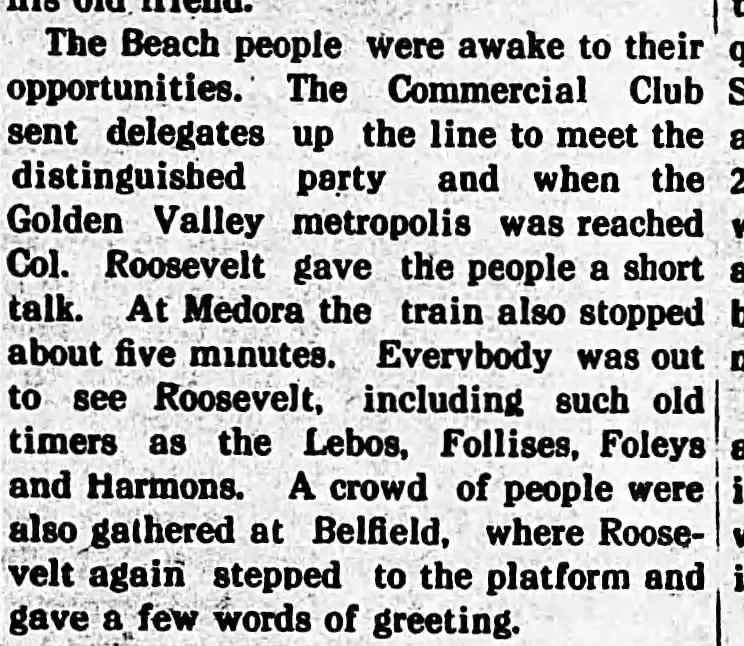
THEODORE ROOSEVELT PASSES THROUGH MEDORA ON A TRAIN BUT DOESN’T STOP
On his way from New York to Denver, Colorado, Theodore Roosevelt passed through Medora but did not stop. During this trip, he gave a speech in Fargo on September 6, 1912.
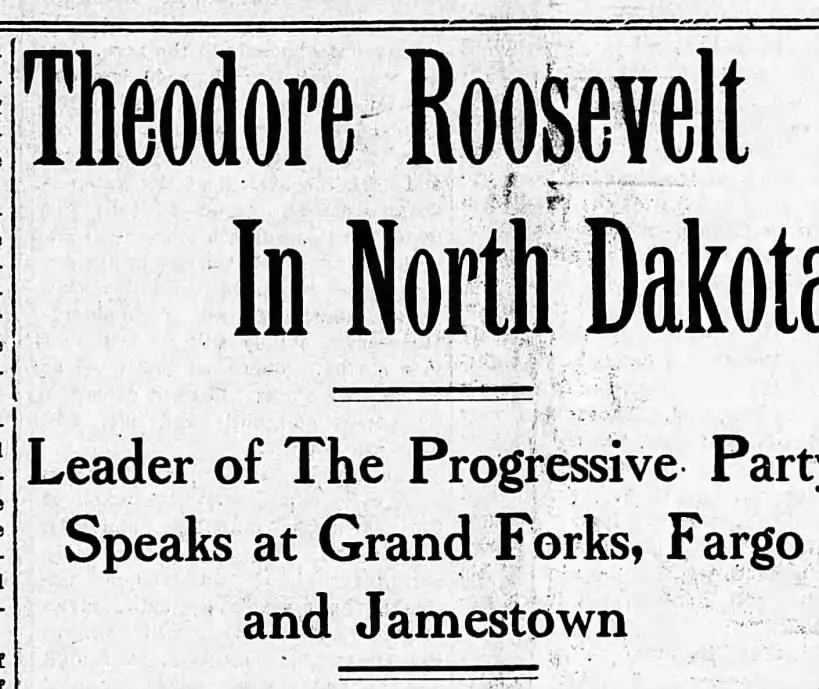
THEODORE ROOSEVELT PASSES THROUGH MEDORA ON A TRAIN BUT DOESN’T STOP
Once again, Theodore Roosevelt passed through Medora by train but did not stop in October 1918. He was traveling from Billings, Montana where he spoke on Saturday, October 5, 1918 in route to Minneapolis. On Sunday, October 6, 1918, Roosevelt made a brief stop in Fargo, recalling that he spent the better part of 14 years in North Dakota.
